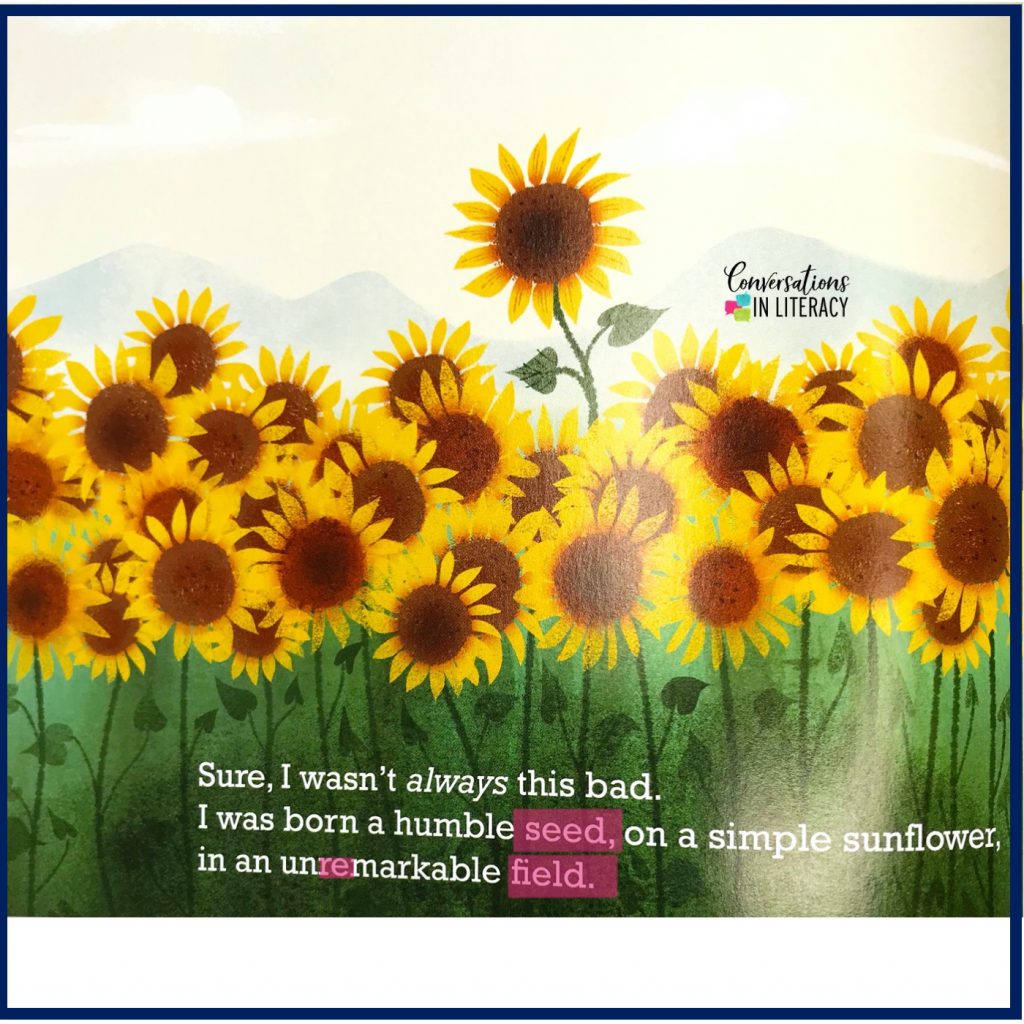
To strengthen phonics skills, we need to build a foundation in phonological awareness. One key way to do this is to target the sounds you are focusing on with your students.
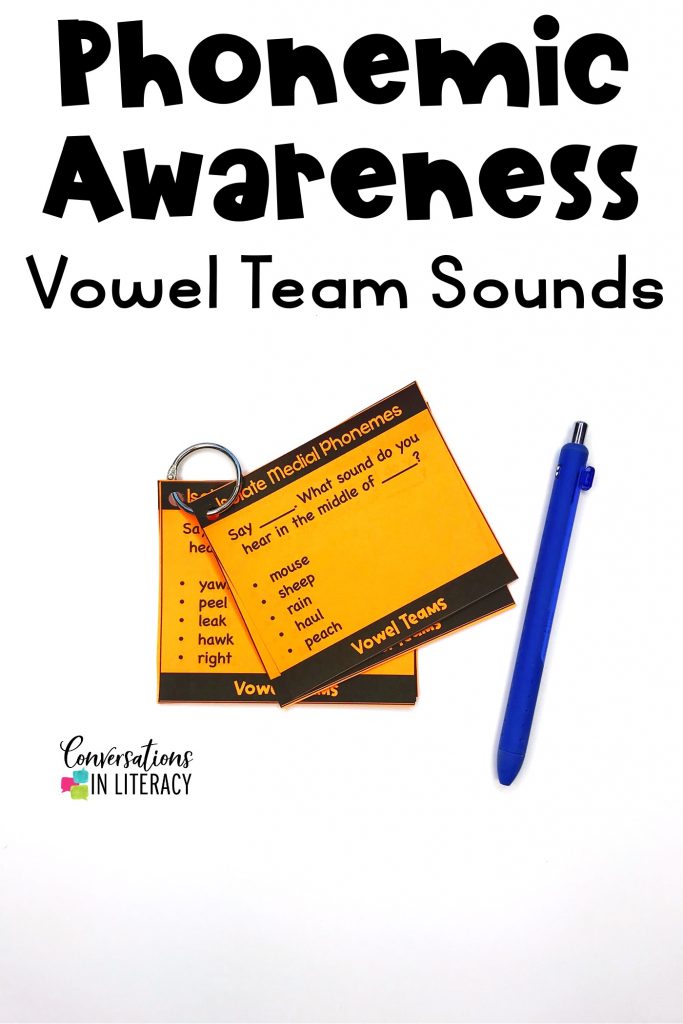
For example, if a group of students are working on vowel teams, then we are going to go phonemic awareness activities helping them to target those particular sounds. Just the sounds in this activity. I just want them to focus on isolating and hearing those sounds. And students really seem to enjoy these types of activities. They find it fun and mostly no pressure!
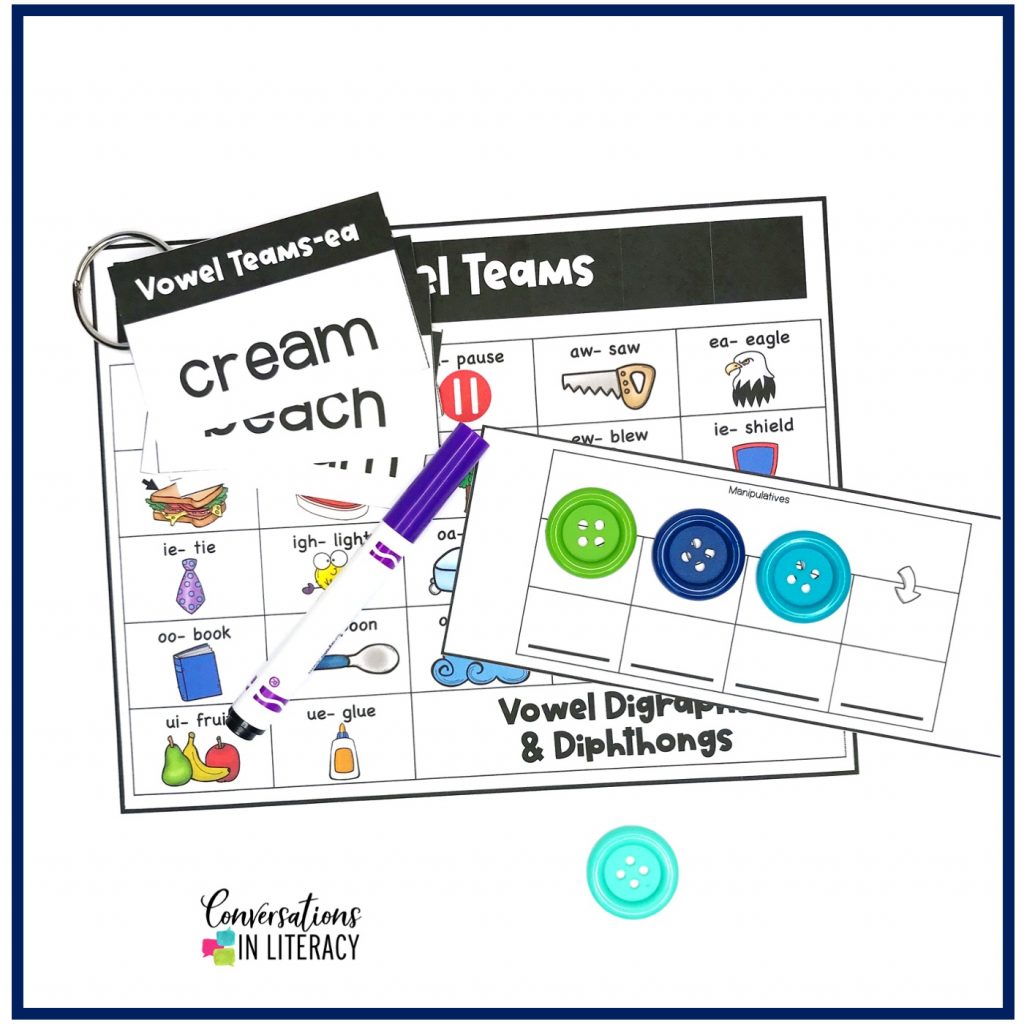
Continuing with our vowel teams focus, we may also complete some word mapping activities next. I like to have a stack of word cards already prepared and printed ahead of time so I am not having to come up with words off the top of my head. I would use those cards to call out words with the focused sounds and spelling patterns. Then students could tap, map and graph. I like to sometimes have students use manipulatives for this. It can be a help to some students to move an object as they tap out sounds.
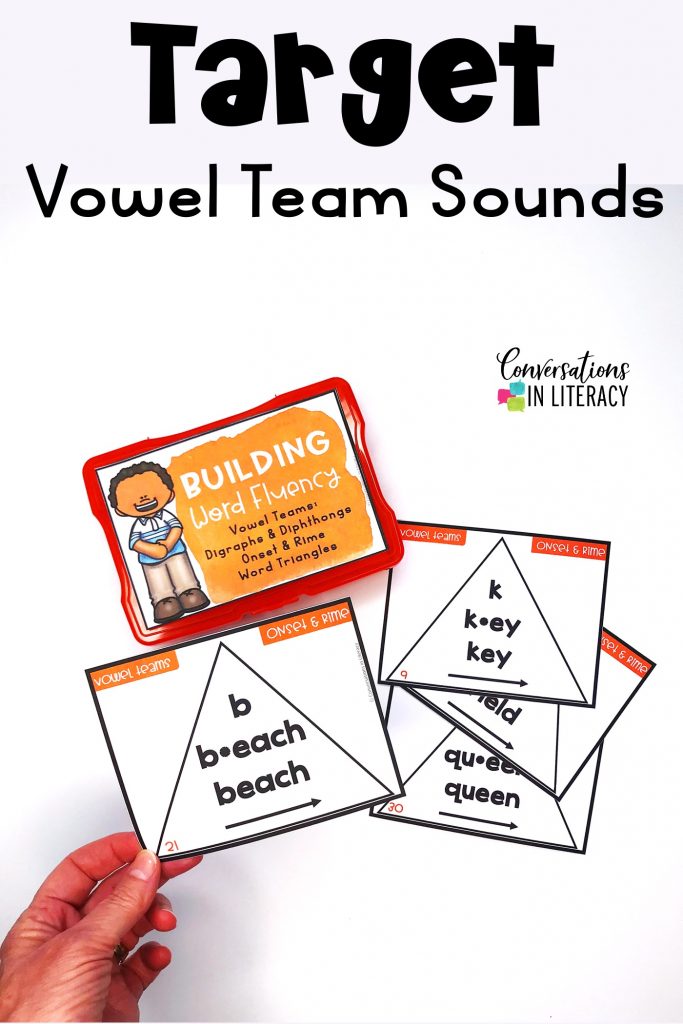
Some students have learned the individual sounds and are ready to break words into onsets and rimes. This is a higher level skill and can help students with word fluency if they are ready for it.
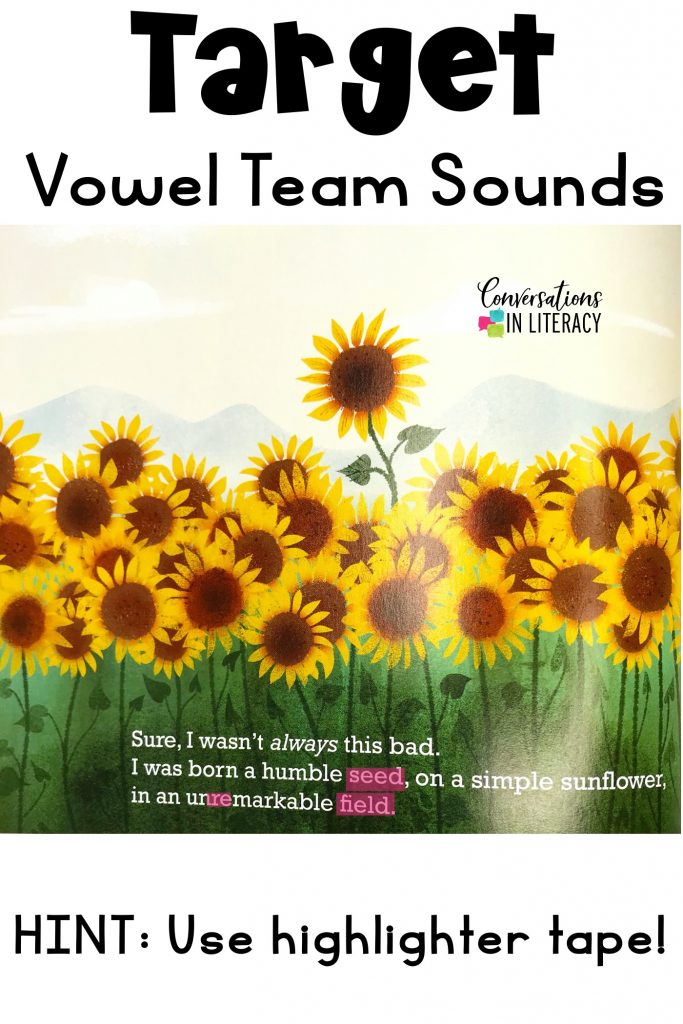
All this practice with vowels sounds or any other targeted vowel sound now needs to be put into practice with real text. The reason we do all this building of skills is to be able to apply it when reading. A really effective way to do this is to have students go on a sound hunt. If we are focusing on the long e sound, students look through the text for words that have that sound.
Soon students will notice that there are different spelling patterns for that one sound. And a great thing about this activity, students will find words based on what they are ready for: students that are only ready for CVCe words or double ee words will find those but students who are ready for other patterns will notice then in the words they can read.

Students can write their words on sticky notes to build a long e word chart. They can stick them anywhere on the chart in the time you give them to find words.
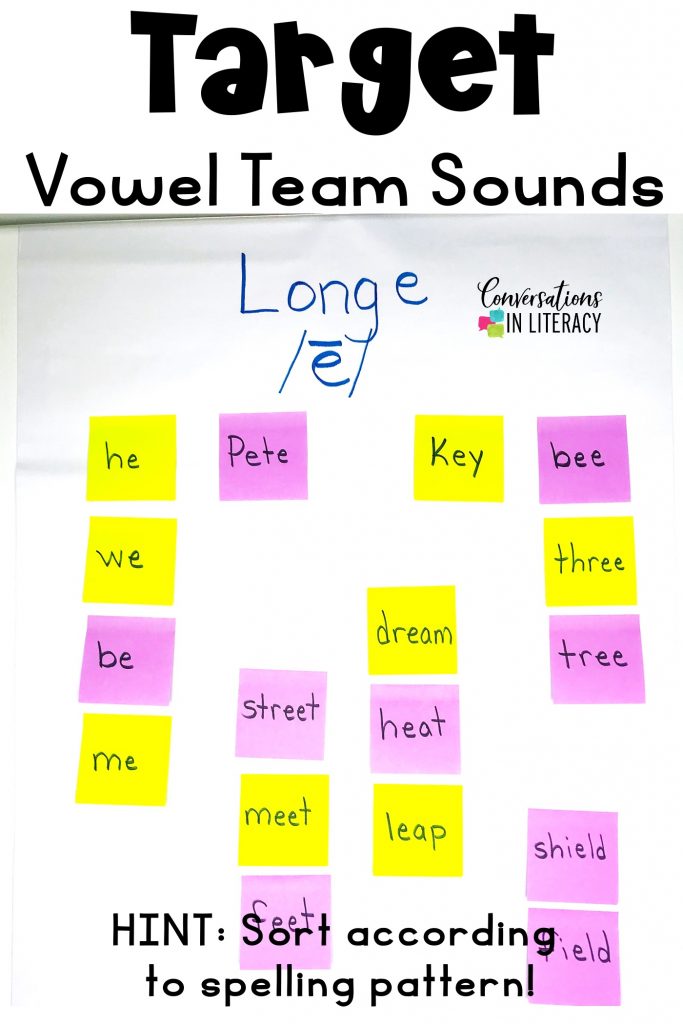
After the time is up, students then can sort the words according to the spelling patterns. They are always amazed that a sound can be spelled different ways!

The next step would be to allow students to add to their chart over the week or anytime as they find new words. This is a step that really grows their understanding of the targeted sounds and the different ways to spell those sounds! Not only does this help with their decoding skills, it will also help with their spelling (encoding).
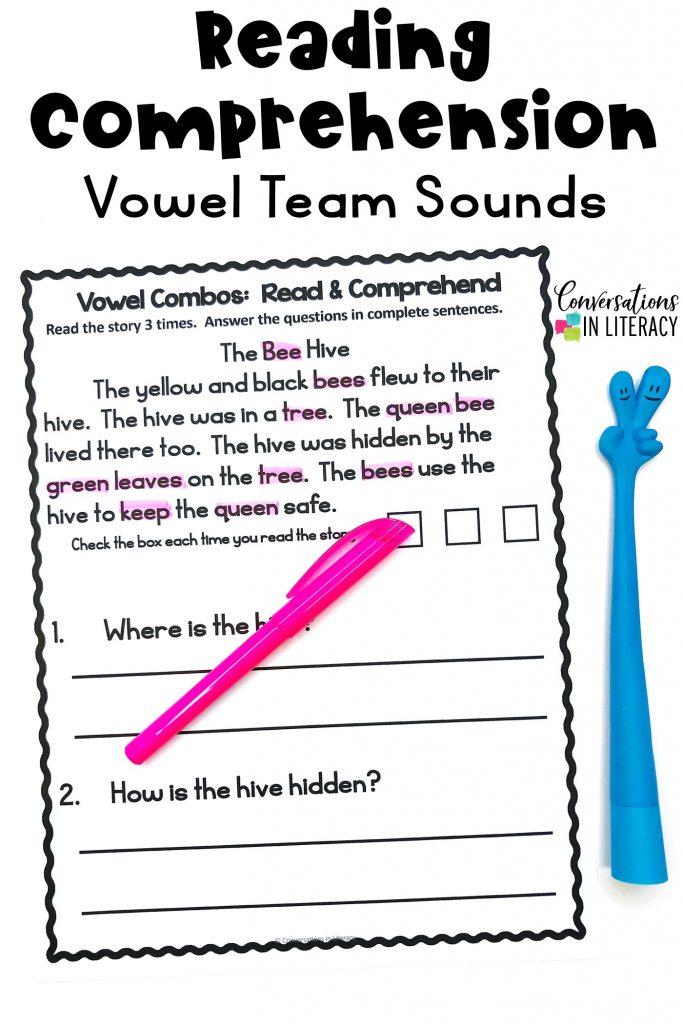
Some students can also benefit from extra practice by doing a word hunt and reading in passages with these targeted sounds.
Hang your charts or have students create smaller ones to keep in their reading notebooks. We used smaller paper that didn’t take up as much wall space. Students would be so proud of themselves when they found words to add to our charts. Especially if they happened to find words with new spelling patterns for the sound.

I love all of your teaching reading strategies. I’ve been following you for a long time now. Thank you! 🙂 Where do you buy your cute pointers for kids?
Hi Lisa! Thank you for the compliment!! The pointer in this post is from Amazon: https://amzn.to/3LlTm1X (affiliate link). They are fun!